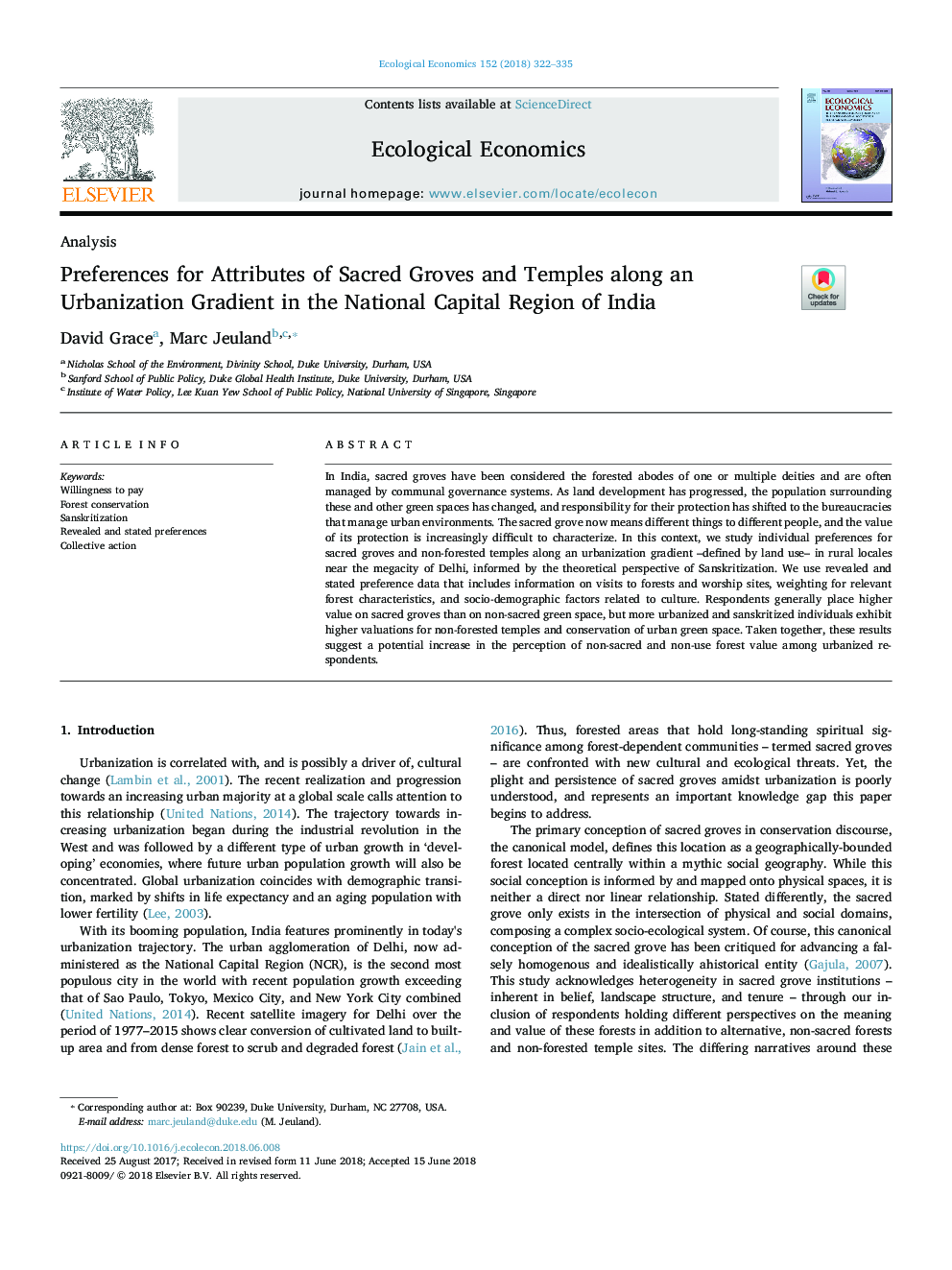| Article ID | Journal | Published Year | Pages | File Type |
|---|---|---|---|---|
| 7343845 | Ecological Economics | 2018 | 14 Pages |
Abstract
In India, sacred groves have been considered the forested abodes of one or multiple deities and are often managed by communal governance systems. As land development has progressed, the population surrounding these and other green spaces has changed, and responsibility for their protection has shifted to the bureaucracies that manage urban environments. The sacred grove now means different things to different people, and the value of its protection is increasingly difficult to characterize. In this context, we study individual preferences for sacred groves and non-forested temples along an urbanization gradient -defined by land use- in rural locales near the megacity of Delhi, informed by the theoretical perspective of Sanskritization. We use revealed and stated preference data that includes information on visits to forests and worship sites, weighting for relevant forest characteristics, and socio-demographic factors related to culture. Respondents generally place higher value on sacred groves than on non-sacred green space, but more urbanized and sanskritized individuals exhibit higher valuations for non-forested temples and conservation of urban green space. Taken together, these results suggest a potential increase in the perception of non-sacred and non-use forest value among urbanized respondents.
Related Topics
Life Sciences
Agricultural and Biological Sciences
Ecology, Evolution, Behavior and Systematics
Authors
David Grace, Marc Jeuland,
